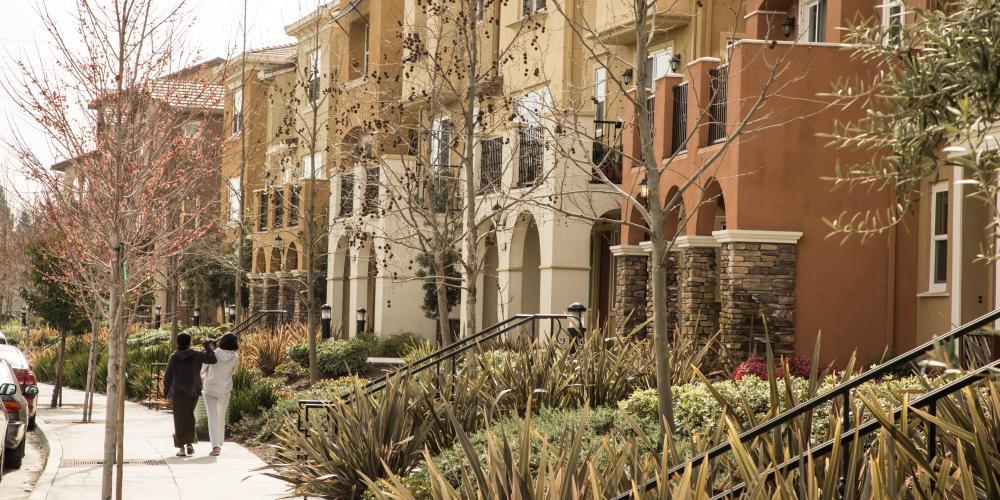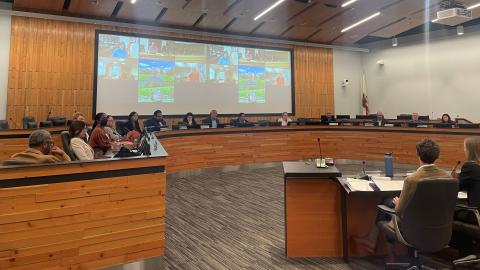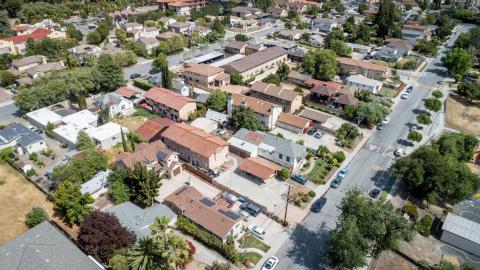
Last year was a very active year for housing legislation in California, with approval of a housing package that included new funding for affordable housing as well as some modest regulatory changes. It appears, however, this may have just been a warm-up act for 2018. Currently, there are nearly 20 different major housing bills under consideration by lawmakers in the state’s capitol. Outside organizations are also organizing to place various housing-related measures on the statewide ballot in November 2018.
In this post, we’ll provide an overview of these various bills and initiatives and then segue into a discussion of key policy considerations for MTC and ABAG in light of regional goals, particularly those articulated in Plan Bay Area 2040, the nine-county Bay Area’s long-range transportation and land use plan jointly adopted by both agencies in July 2017.
Overview of Housing Bills and Ballot Initiatives
Staff has grouped these bills and initiatives into a few major categories:
- State Zoning Preemption and Housing Production
- Bills meant to preempt local zoning under certain prescribed conditions to facilitate increased housing production of certain types of units, whether housing near transit, Accessory Dwelling Units (ADUs), student housing, supportive housing for the homeless, and so on.
- Regional Housing Needs Allocation (RHNA)
- Bills intended to reform RHNA, which is the state-mandated process to identify the total number of housing units (by affordability level) that each jurisdiction must accommodate in its Housing Element.
- Fiscalization of Land Use/Property Taxes
- Bills and initiatives that deal with aspects of Proposition 13, the voter initiative passed in 1978 which caps the statewide property tax rate at 1 percent for residential and commercial property owners and limits annual increases on assessed value, as well as additional taxing authority for cities and counties to finance housing and infrastructure project.
- Rent Control, Tenant Protections and Anti-Displacement
- Bills and initiatives that are intended to help low-income and vulnerable households stay in their homes.
The below table summarizes the major bills legislative staff are monitoring (for more information, including additional impact analysis, read this memo which was presented to the Joint MTC and ABAG Legislative Committees meeting from 3/9). It’s important to note that much of this is still preliminary and a lot could change over the coming months. A policy discussion follows the table.
Overview of 2018 Proposed California Housing Legislation
| Bill Number/ Ballot Initiative |
Summary |
|---|---|
| SB 827 (Wiener) | Authorizes transit-rich housing projects – or qualified housing developments located within ½ mile of a major transit stop or within ¼ mile of a bus stop on a high-quality transit corridor – to receive a “transit-rich housing bonus.” Projects receiving a transit-rich housing bonus would be exempt from locally adopted residential density and floor area ratio maximums and parking minimums. The bill would also establish new minimum height limits for transit-rich housing projects. |
| SB 831 (Wieckowski) | Removes barriers to accessory dwelling unit (ADU) development, including exempting ADUs from local impact fees and creating an amnesty program for homeowners to legalize existing unpermitted ADUs. |
| SB 1227 (Skinner) | Expands the state density bonus law to include incentives for developers to build student housing. |
| AB 2167 (Chiu) | Requires that qualified supportive housing developments be approved by right in zones where multiple dwelling uses are permitted, including commercial zones, if the proposed housing development meets specified criteria. |
| AB 2372 (Gloria) | Authorizes a new floor area ratio bonus for eligible housing developments located near transit. |
| AB 2923 (Chiu) | Requires the Bay Area Rapid Transit (BART) district to establish transit-oriented development (TOD) zoning standards that support established goals for TOD projects on BART-owned land within ½ mile of existing or planned BART stations. |
| SB 828 (Wiener) | A spot bill intended to make changes to the statewide regional housing needs assessment processes and revise requirements related to regional housing needs allocations. |
| AB 1771 (Bloom) | A spot bill intended to make changes to the process of allocating regional housing needs to jurisdictions. |
| AB 1748/ACA 20 (Steinorth) | Amends Proposition 13-related property tax law and constitutional provisions to allow homeowners age 55 and above to carry their current low assessed value with them anywhere in the state as many times as they move. In addition, younger homeowners would be allowed a onetime base tax transfer to a new home. |
| Proposition 13 Ballot Initiative | The California Association of Realtors is gathering signatures for an initiative that would allow homeowners age 55 and above the option to carry their current low assessed value with them anywhere in the state as many times as they move. |
| "Split-Roll" Ballot Initiative | A coalition of civil rights groups and community organizations are gathering signatures for an initiative to require annual assessments on commercial and industrial properties to keep pace with market value, while retaining the Proposition 13 cap on residential property assessment growth. |
| AB 3037 (Chiu) | A spot bill intended authorize a city or county to form a redevelopment housing and infrastructure agency with similar powers to those previously granted to redevelopment agencies in order to finance housing and infrastructure projects. |
| AB 1506 (Bloom) | Repeals the Costa-Hawkins Rental Housing Act, which prohibits cities from applying rent-control policies to multifamily developments built after 1995 or to single-family homes. The bill died in committee earlier this year. |
| Rent Control Ballot Initiative | Tenant advocates and the AIDS Healthcare Foundation are gathering signatures to qualify a 2018 ballot initiative to reinstate authority for localities to adopt rent control ordinances. |
| SB 1182 (Glazer) | Doubles the state’s renter’s tax credit, raising it to $240 for households $120 for individual filers. |
| AB 2343 (Chiu) | Gives tenants more time to respond to eviction proceedings and make other changes to the eviction process. |
| AB 2364 (Bloom) | A spot bill intended make it more challenging for landlords to evict tenants under the Ellis Act, the state housing law that allows landlords to evict tenants from rent-controlled apartments if they are tearing down a building or leaving the rental market. |
| AB 2925 (Bonta) | A spot bill intended to create a statewide “just cause eviction” policy. |
Policy Discussion
The 2018 Joint Advocacy Program adopted by MTC and ABAG charts a course for the agencies to support policy changes in Sacramento that will “increase housing production, improve access to affordable housing units for all income levels, encourage transit-oriented development, mitigate displacement of existing residents, and update RHNA.”
These are important and necessary goals, of course, but the details can get contentious and complicated pretty quickly. To that end, staff posed the following questions to members of the Joint MTC and ABAG Legislation Committees to help guide staff’s analysis and engagement on housing as the year proceeds:
1) Given the state’s policy and fiscal interest in promoting public transit (e.g. key to state’s greenhouse gas reduction strategy, ongoing and significant investment of state funding), to what extent should the state have a say in zoning-related subjects in close proximity to public transit hubs and corridors in order to maximize ridership (and thereby, all the mobility and environmental benefits of the system)?
2) To what extent is ABAG willing to support additional state oversight of the RHNA process? What areas of RHNA reform are non-starters and what are negotiable in exchange for getting reforms that ABAG supports, such as additional flexibility in the types of units that are counted by the State Department of Housing and Community Development (HCD)?
3) To what extent would addressing changes to the current property tax system under Proposition 13, such as a so-called "split roll," (whereby commercial property assessed value would be allowed to adjust with the market, but residential property would remain capped) change the calculus for local governments when thinking about whether to approve new housing? Could new funding for schools or infrastructure be a sufficient "carrot" for some cities to approve additional housing units that would otherwise be rejected out of concern about the financial impact on the local jurisdiction?
4) Legislation to repeal the Costa-Hawkins statute pre-empting certain forms of local rent control has stalled in Sacramento. An initiative measure on this subject may appear on a forthcoming statewide ballot. What, if any, role should ABAG play on legislative or initiative measures to enhance tenant protections and anti-displacement strategies?
The below video from last week’s joint meeting of the MTC and ABAG Legislation Committees shows the fruits of this policy discussion. The video opens with Manager of Government Relations Rebecca Long providing a summary of the bills and then launches fairly quickly into a vigorous discussion amongst the committee members about goals, values, visions, constraints, design, impacts, fairness and nitty-gritty details.
If you excuse some of the technical difficulties at the beginning, the back-and-forth of the conversation gives a good sense of the many complex interests and issues faced by policy-makers serving on the different boards, as they grapple with reaching (or not reaching) a consensus on supporting (or not supporting) state-level policy changes.
The discussion runs for a good hour, until about the 01:10:00 mark.



Submit your comment
In order to receive a reply to your comment, please provide an email address.